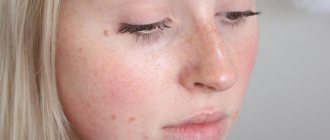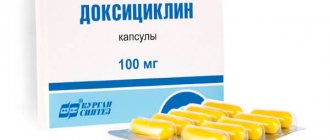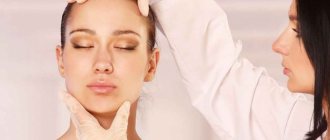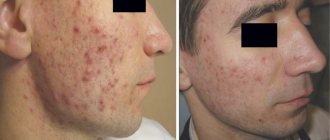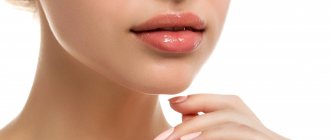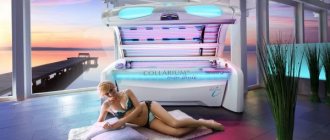Laser facial resurfacing (or fractional photothermolysis) is a hardware cosmetology procedure offered by specialists at Alla Khazova’s clinic. This is an effective method of rejuvenating and renewing the skin, allowing you to solve a whole range of aesthetic and age-related problems.
The facial cleansing procedure is performed with a modern fractional CO2 laser, which specifically targets problem areas, penetrating the superficial and deep layers of the dermis (up to 4 mm or more).
Fractional laser resurfacing of facial skin is safe and effective in correcting age spots, deep, medium and superficial wrinkles, stretch marks, post-acne, neoplasms and many other cosmetic problems.
CO2 laser skin resurfacing
CO2 laser skin resurfacing is a procedure that uses carbon dioxide (CO2) and a laser to remove scars, warts, stretch marks and deep wrinkles. Using this method, you can reduce the appearance of several signs of aging and get rid of some other imperfections.
The device uses intense light power to treat many aesthetic problems. Drooping bags under the eyes, acne scars and age spots are some of the most common problems that are addressed to cosmetology centers in Moscow and other cities. The procedure has a fairly high price, but if used correctly, this type of hardware intervention can significantly delay the need for surgical intervention.
Indications for laser peeling
The essence of the hardware technique, called laser peeling (resurfacing, dermabrasion), is that under the influence of a laser beam, controlled damage to the epidermis occurs in order to start the process of skin renewal. During the procedure, due to the strong heating of the skin surface, some of its layers evaporate.
Laser peeling is a professional cosmetic procedure that gives a noticeable effect in the fight against imperfections and skin problems that are much worse dealt with by other methods. The face literally transforms after laser peeling. Moreover, the depth of exposure can be adjusted, focusing on the severity of skin flaws and their localization.
Using this procedure you can get rid of:
- scars and stagnant spots formed due to acne;
- scars and stretch marks (all over the body);
- sagging facial skin and wrinkles on it;
- sagging and thinning of the skin of the eyelids.
Laser peeling will be useful in the following cases:
- uneven skin texture;
- there are pigment spots on the face;
- too enlarged pores on the skin;
- dull complexion, lack of skin tone;
- there are milia;
- hyperkeratosis is observed.
How does CO2 laser resurfacing work?
Ablative lasers, such as the CO2 laser, cause damage to the skin. The procedure removes a thin surface layer (epidermis) and heats the underlying layer (dermis). This stimulates the growth of new collagen fibers, the synthesis of which is slowed down for one reason or another. As the skin heals and new epidermal cells form, the treated skin becomes clearer, smoother, and firmer. Renewed skin is better supplied with blood and nutrients and absorbs care products better.
A similar effect can be achieved using non-ablative lasers such as pulsed light (IPL) devices. They do not damage the skin, but instead stimulate collagen synthesis and improve tone and texture. It is less invasive and requires less recovery time, while at the same time being less effective.
The cosmetologist chooses the type of laser depending on the patient’s existing problems and cosmetic goals.
Sign up for the procedure
Price: 5000 rub (upper or lower eyelids)
Do you want to get rid of dull complexion and various skin imperfections in just one procedure? Thanks to CO2 Light fractional laser peeling, your skin will regain its natural radiance and smoothness! The beam of the AcuPulse device not only removes damaged cells on the surface of the skin, erasing all imperfections, but also forms healing microzones in the epidermis, renewing it from the inside. Developed by the renowned company Lumenis, the AcuPulse laser is one of the most advanced CO2 lasers in the world. Its unique ultra-short pulse allows you to achieve impressive results with no side effects.
The laser peeling procedure has become a real must-have for girls over 25 who care about the beauty, health and youth of their skin.
Why is it worth undergoing a laser peeling procedure with us? The Premium Aesthetics Academy of Cosmetology is the only clinic in Moscow opened by the official distributor of the AcuPulse laser in Russia. We can guarantee impeccable quality of the procedure and affordable cost.
What are the benefits of carbon dioxide laser resurfacing?
CO2 laser skin resurfacing
Skin resurfacing using a CO2 laser can be used for the following cosmetic defects:
- Fine and deep wrinkles
- Age spots
- Uneven shade or texture
- Sun damaged skin
- Mild to moderate acne scars
- Large pores
- Superficial or deep hyperpigmentation.
Other applications of carbon dioxide grinding include:
- Seborrheic keratosis
- Non-malignant neoplasms of HPV
- Hyperplasia of the sebaceous glands
- Angiofibroma (fibrous nasal papule)
- Connective and complex nevi
- Lentigo spots
- Syringomas (intradermal papules)
- Epidermal melasma (increased skin pigmentation)
- Rhinophyma (tissue hypertrophy on the nose)
Benefits of fractional laser rejuvenation
This technology has been used in the field of cosmetology for more than 10 years. It is effective, safe and has a number of advantages when compared with other rejuvenating and healing techniques:
- practically does not cause side effects;
- non-invasive, so there is no chance of client infection (including HIV);
- painless and quite comfortable;
- allowed from 16 years of age;
- hygienic, since the instruments do not come into contact with the skin;
- suitable for atonic skin types;
- it is possible to choose an individual treatment program;
- Suitable for clients with any degree of skin pigmentation;
- areas with defects are treated pointwise, so the possibility of damage to healthy tissue around is excluded;
- due to the fact that only 25% of the skin is injured, the recovery period after the procedure is short (face – seven days, body – 14 days);
- the effect becomes noticeable immediately after the first procedure;
- the result obtained lasts for several years;
- it is possible to treat delicate areas;
- in affected areas, elastin production is significantly accelerated.
When is CO2 laser resurfacing not recommended?
Like any procedure, laser rejuvenation has contraindications. The patient must carefully read this list, since laser exposure to the skin is a serious intervention with a risk of complications. Skin resurfacing is not recommended in the following cases:
- Active bacterial, viral or fungal infections
- Poor general health, inflammatory processes in the body
- Taking oral isotretinoin (Accutane) within the past 6 months
- Fitzpatrick skin phototypes 5-6 (very dark skin)
- Other resurfacing procedures within the previous 2-3 months
- Unwillingness to accept the possibility of complications
- Excessively thick or thin skin (determined by a doctor during consultation)
- Collagen vascular diseases
- Human immunodeficiency virus (HIV) or systemic infections
- Tendency to form keloid scars
- Metal piercing in the treated area
How does laser work on acne-affected skin?
Laser radiation is aimed at individual affected areas of the skin, while, which is very important, it does not affect healthy tissue. At the same time, laser exposure reduces the activity of the sebaceous glands, promotes rapid healing of wounds, improves blood supply, and normalizes the processes of sebum production.
When treating patients with acne, doctors set three goals:
- achieve complete clinical cure (disappearance of all acne elements);
- prevent the development of post-acne scars (acne scars on the face) or improve the condition of existing scars;
- develop an individual set of preventive measures to prevent the development of acne in the future.
In the fight against inflammatory elements, a non-ablative technique is used to influence the bacterial flora of acne lesions, based on the effect of homogeneous photothermolysis provided by a long-pulse Nd:YAG laser. Laser parameters:
- pulse duration - 50–100–200 ms;
- energy density - 15–50 J/cm2;
- working spot diameter is 4–6 mm.
The technique is used to treat all forms of acne at any stage of development of the elements. It is based on the absorption of a wavelength of 1064 nm by the protein shell of microflora with the appearance of the effect of bacteriolysis; It is used both independently and in complex acne therapy. During the procedure, a sighting arm is used to work on single elements and an S-II scanner is used to work over the entire affected area in severe cases. The radiation of a long-pulse Nd:YAG laser is aimed at sterilizing acne lesions. It must be remembered that laser treatment is not compatible with the use of drugs that increase photosensitivity.
The choice of laser depends primarily on the stage of the disease:
- Stage 1 - it is enough to use an Nd:YAG laser, 1-2 procedures per week, a course of 8-10 (number of passes - 1-2);
- Stage 2 - in the first place is the use of Nd:YAG laser, but the tactics change: 3-4 procedures daily (number of passes 1-2), then a break in treatment for 3-5 days, then a repeat course of 8-12 procedures , and after 2–4 weeks the use of an erbium or CO2 laser is added;
- Stage 3 - first, long-term treatment of papulopustular rashes with a course of 10–12 procedures: daily sessions or at intervals of 3–7 days, which is determined by the doctor as the patient’s skin recovers (number of passes 3–4), and then skin resurfacing.
From the above, it becomes clear that in the treatment of acne, regardless of the type of laser used, the first stage is the fight against inflammatory elements and only then comes skin resurfacing. Men have thicker skin than women, which is why they use higher laser parameters.
Laser resurfacing is based on the use of a laser beam, which penetrates the surface layers of the skin (1–20 microns) and ensures the evaporation of cells. The old layers of the epidermis are eliminated, the skin is regenerated and completely renewed: collagen fibers exposed to laser stimulation stimulate the appearance of new fibroblast cells, which, in turn, synthesize new fibers.
The following types of lasers are used to treat acne: neodymium, erbium, carbon dioxide (CO2), and fractional. The radiation energy of an erbium laser is concentrated in a thin layer of skin at a depth of about 1 micron, while the radiation of a carbon dioxide laser penetrates deeper - up to 20 microns. The main effect in the first case is the evaporation of cells, in the second it additionally causes tissue coagulation. Considering such differences in action, carbon dioxide laser is used if they want to achieve the maximum effect of skin renewal and smoothing of its relief, which, however, is associated with a higher risk of complications. The erbium laser operates more cautiously.
In turn, fractional lasers heat the skin in the treatment area not over the entire area, but in microfractions, forming areas of coagulation necrosis with a diameter of about 0.2 mm and a depth of up to 1.5 mm. Heating and coagulation in the epidermis occurs in the lower layers; the stratum corneum of the epidermis is practically not damaged. “Columns” of coagulative necrosis are surrounded by a zone of burn shock. In the latter, within 1–3 hours after laser exposure, heat shock proteins, growth factors, and interleukins are released, which trigger proliferation processes in the epidermis and dermis, activate intra- and extracellular proteolysis and attract immune cells, primarily macrophages, to the damaged area. Due to the migration and division of epidermal stem cells, the basal layer in the affected area is completely restored after 24 hours.
Do not forget that the use of a carbon dioxide laser requires anesthesia; when using an erbium and fractional laser, only superficial anesthesia is sufficient, but procedures with a neodymium laser are practically painless and do not require any anesthesia. The choice of type of laser procedure depends on the course of acne in a particular patient. The amount of intervention required and the duration of the recovery period are taken into account.
Laser resurfacing of post-acne scars. Performed by dermatocosmetologist Elena Vlasova.
Is resurfacing with a CO2 laser painful and what to expect after?
This procedure is usually performed under anesthesia, so discomfort is minimal. This is a numbing cream that is applied directly to the skin. Other types of anesthesia are performed in selected situations and skin conditions that require deeper laser penetration.
After exposure to CO2 you can expect to feel a slight sunburn. You will also notice redness and swelling on the skin. Itching and mild tingling for several days are common. Depending on the intensity of treatment, the “sunburn” effect may be weaker or more severe. In these more severe cases of redness, scabs may appear as the skin heals.
Preparation and progress of the procedure
To avoid disastrous consequences in the form of complications after a cosmetic procedure, it is necessary to carefully prepare for it.
First, you need to consult with a cosmetologist and get an assessment of the condition of the skin on your face. The specialist will determine a list of contraindications and give the necessary recommendations.
Before the procedure, it is not advisable to visit the bathhouse, sauna, or solarium for 3–4 weeks. In addition, sunbathing in the open sun is prohibited. Before going outside, you need to apply sunscreen to your face.
It is very important to stop taking certain medications, particularly antibiotics and blood thinners. In addition, doctors recommend taking antiherpetic medications.
No later than two weeks in advance, it is not recommended to perform manipulations that injure the skin tissue.
We recommend
Laser hair removal of the abdomen: contraindications, features of the procedure and care Read more
Fractional laser rejuvenation of the eyes and other areas takes place in several stages. First, the cosmetologist must prepare the skin areas for the procedures. To do this, it removes the remnants of decorative cosmetics from the skin, as well as dirt, dust, and sweat. Then the surface is treated with an antiseptic.
The next step is to apply an anesthetic cream, which is left on the skin for about an hour.
After anesthesia, contact gel is evenly applied to the face so that the sensor glides smoothly and evenly over the surface of the skin.
The tip is then used to process the skin tissue in straight lines in several directions. The device is equipped with nozzles of different sizes. Typically, 2 cm² of skin is treated in one pass.
At the end of the procedure, the specialist should remove the remaining contact gel and apply a soothing cream.
Post-procedure care
Do not touch or rub your skin when brushing or showering, and avoid contact with hot water. The treated area must be cleaned 2 to 5 times a day, and also include protective products in your care that the cosmetologist will recommend.
The treatment area is peeled off during the recovery period to allow new cells to come to the surface. The new skin will be pink, like after a major scratch. Over time, the pinkness will go away, and during this period it is important to protect yourself from external influences, especially ultraviolet rays. Redness tends to last longer in people with fair skin, such as blondes and redheads. Full recovery may take up to a year.
Frequently asked questions about fractional laser rejuvenation
Minimum age allowed for laser facial rejuvenation
There are practically no restrictions. The procedures can be performed as early as 17 years of age to get rid of acne scars.
For women over 40 who want to maintain youth and attractiveness, the technique is especially useful, since laser beams provoke the production of their own collagen by skin cells.
The recovery period after fractional laser rejuvenation is usually 7–14 days. The duration of rehabilitation depends on the complexity of the problem and the type of laser treatment.
When can I start working?
This depends on what type of laser treatment was used, on the area of problem areas, and on the experience and skills of the cosmetologist. The recovery period, based on the method and complexity of the defects, ranges from two days to three weeks. It happens that the patient can start working just a day after the session.
How long does it take to see results?
It takes about six months for the skin to be completely renewed and the effect to become noticeable. The result lasts for about five years.
Fractional laser facial skin rejuvenation is a highly effective cosmetic procedure. It has many advantages compared to similar anti-aging techniques. But you need to know that this procedure is not suitable for everyone and has contraindications. Therefore, you must first consult with a specialist. And to reduce the risk of complications, you should choose only reliable and trusted clinics.
Why clients choose Veronika Herba Beauty and Health Center:
- This is a beauty center where you can take care of yourself at a reasonable cost, while your face and/or body will be treated not by an ordinary cosmetologist, but by one of the best cosmetologists in Moscow. This is a completely different, higher level of service!
- You can receive qualified help at any time convenient for you. The beauty center is open from 9:00 to 21:00, seven days a week. The main thing is to agree with your doctor in advance on the date and time of your appointment.
Sign up for a consultation with a specialist by phone +7 (495) 085-15-13
, and you will see for yourself!
How long does it take for the treated area to heal?
Facial restoration after CO2 laser resurfacing takes from 7 to 14 days, depending on the depth of beam penetration. After the procedure, swelling occurs. It peaks on the second or third day and then subsides by the fifth or seventh day. Redness and itching are normal and should not be a cause for concern. During the first week, varying degrees of crust formation are observed. It is necessary to apply open or closed dressings until complete healing.
Apply a light, water-based moisturizer for the next 2-3 weeks. Avoid products containing acids such as salicylic, glycolic, etc. in your daily care until the skin is completely restored. After healing, use sunscreen.
A return visit to the clinic where the procedure was performed is usually required after 2-3 days, then a week, 3-4 weeks, 3 months, 6 months and 1 year after resurfacing.
Types of laser peeling for the face for wrinkles and other skin problems
- Cold laser peeling
This is what is commonly called superficial laser peeling, which does not heat the deep layers of the epidermis and does not affect the dermis. It evens out skin texture and tone well. After a course of superficial peeling, she looks smooth and radiant - the effect of the procedure is similar to acid peeling, which visually rejuvenates the face.
Before the procedure, local anesthesia is required (a special anesthetic cream is applied to the skin). Complete exfoliation occurs in 2–3 days. There is no severe swelling.
- Hot laser peeling
The technique involves influencing at a deeper level, which also affects the effect - it is more pronounced and comparable to medium acid peeling.
Deep laser peeling can be carried out with different types of devices - fractional and standard. The second type is more traumatic; in this case, the laser beam damages the entire skin, making several passes and evaporating the epidermis layer by layer. The dermal layer also warms up, which helps stimulate the production of protein structures.
A deeper effect on the skin makes the painful sensations stronger. Rehabilitation is not quick or easy. Swelling persists for several days, the face is covered with crusts that disappear for at least a week. But after healing, the rejuvenating effect is impressive: the skin texture is evened out, it is noticeably tightened, it becomes more elastic and firm.
- Fractional laser peeling
This procedure is much easier to tolerate than the previous one, and recovery after it is easier, because during laser exposure the skin is not completely damaged. Between the areas heated by the laser, there are microscopic zones that are not affected by the laser. Fractional laser peeling can be either cold or hot - the method allows for exposure at different levels.
You can also find another name for this peeling – laser photothermolysis. The advantage of a fractional laser compared to a traditional one is its targeted effect. During photothermolysis, the laser beam breaks up into a mass of very thin beams. The impact on the skin occurs from the superficial to deep layers. Nevertheless, the tissues are damaged fragmentarily and in doses, and there are untouched gaps between the injured areas, so rehabilitation does not take much time and causes virtually no discomfort. The procedure itself does not cause pain either.
It takes about five days for the microscopic crusts to disappear. You can see the result within a week. And although many are satisfied with the effect after the first procedure, it is recommended to complete a course (3-4 sessions) so that the skin is completely renewed.
Recommended articles on the topic:
- Ultrasonic facial peeling is a pleasant and beneficial procedure for your skin
- Redermalization of the skin: all the pros and cons
- Almond peeling for the face: features of the procedure
- Carbon laser peeling
Laser carbon peeling is a new procedure, it is aimed at deep cleansing the skin, is effective and painless. In another way, this peeling is called carbon cleaning. It is used if the skin is acne-prone or too oily. At the first stage, a mask with carbon dioxide (CO2) is applied to the face; laser peeling is done directly at the second stage, when the mask has dried.
What are the possible side effects of CO2 laser resurfacing?
The following transient side effects may occur after exposure to a fractional laser:
- Swelling
- Erythema (redness)
- Itching
- The appearance of acne
- Hyperpigmentation
- Infection (bacterial, viral, fungal)
- Contact dermatitis
- Hypopigmentation (loss of skin pigment)
- Demarcation lines
- Hypertrophic scars and keloids
- Damage to tooth enamel
- Eye injuries
- Post-inflammatory hyperpigmentation
Which type of laser is right for you: carbon dioxide or erbium?
As mentioned above, the choice of the type of laser for resurfacing depends, first of all, on the depth and severity of wrinkles and scars on the skin, as well as on whether you are ready for a relatively long recovery period or whether you want to see the result quickly. In general, carbon dioxide laser resurfacing is considered more aggressive and effective than erbium laser resurfacing, but the recovery period after it lasts up to 2 weeks. And the erbium laser, although less effective in smoothing out deep wrinkles, is characterized by a shorter recovery period.
Karachausheva Aksana Georgievna
- Dermatologist, cosmetologist.
- Doctor of the highest qualification category for planning individual anti-age programs for facial and body rejuvenation.
- Specializes in a combination of modern hardware and injection techniques for skin rejuvenation and treatment. Proficient in the technique of facial contouring and harmonization of appearance while preserving natural beauty and individuality, all methods of nourishing and cleansing the skin. Treats rosacea, rosacea, acne and skin hyperpigmentation.
- He is fluent in the new concept of rejuvenation and non-surgical SMAS facial lifting using high-intensity focused ultrasound on the Ultraformer device.
Prices
Laser peeling. Service code: A22.01.002
| Description of service | Cost of service, rub. |
| One procedure | 10000 |
Laser resurfacing of post-acne. Service code: A22.01.002
| Description of service | Cost of service, rub. |
| Face | 15000 |
| Cheeks/neck | 10000 |
| Forehead | 7000 |
Laser resurfacing rejuvenation. Service code: A22.01.002
Description of service Cost of service, rub. Face 15,000 Face with eye area 20,000 Circular laser blepharoplasty 12,000 Laser blepharoplasty (upper/lower eyelids) 7,000 Perioral zone 5,000Laser resurfacing of scars. Service code: A22.01.002
| Description of service | Cost of service, rub. |
| 1 sq. cm | 1000 |
Who is the procedure indicated for?
Among the patients interested in CO2 laser rejuvenation using the AcuPulse device, there are mainly women over 37 years old, who have begun to noticeably show signs of aging. The technology is especially popular among both women and men who have problems in the area around the eyes. This method helps to almost completely remove microwrinkles and the notorious “crow’s feet” on these delicate areas of the skin.
AcuPulse is also in demand among women after pregnancy who want to get rid of unsightly stretch marks, as well as among people with unaesthetic scars, consequences of burns, injuries and surgical interventions.
The procedure gives the most striking results in the presence of the following problems:
- a large number of wrinkles (both deep mimic and fine mesh wrinkles);
- acne, enlarged pores;
- impaired skin pigmentation (caused by age-related reasons, and appeared as a result of prolonged exposure to the sun), actinic keratosis;
- stretch marks, scars, scars, spider veins on any part of the body;
- too deep nasolabial folds that bother the patient;
- sagging skin, loss of tone, sagging tissue.
CO2 laser rejuvenation is an effective way to combat age-related skin changes. The technology can be used by persons aged 17 years or older. At the same time, doctors talk about the greatest effectiveness of laser rejuvenation for people who have passed the 40-year mark.


